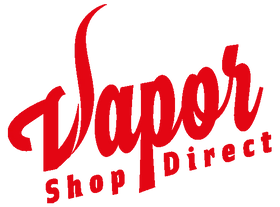The vaping world has changed a lot in the last few years, and one of the biggest reasons for this is the TPD laws. Today I will guide you through what TPD is and how it works.
What is TPD?
TPD (short for Tobacco Products Directive) is a European Union directive setting limits on the merchandising and sales of tobacco and tobacco related products in the EU. It was initially created in 2001 but also modified to include e-cigarettes in 2014.
After the legislation was approved, by 20 May 2016, each member state in the EU had to incorporate the TPD standards into their laws. The TPD is an EU regulatory act on the sale of tobacco products, including vaping devices and e-liquids. The requirements for the TPD compliance are set out in Article 20 of the Tobacco Products Directive.
The Primary Objectives of TPD
For a growing industry, regulation is inevitable and the Tobacco Products Directive was created to improve the internal market operations for tobacco and its related products. Its primary goals are:
- Protecting children from nicotine products. It is designed to ensure that vaping products can only be purchased and used by people over 18.
- Protecting tobacco users by creating quality and safety standards for all vaping devices and e-liquids. It ensures consumers are aware that nicotine is in their purchased products.
- Protecting users by getting both manufacturers and retailers to provide important packaging information.
TPD Restrictions
The TPD laws put restrictions on what vape companies can sell.
E-Liquid Regulations
To be compliant with TPD, e-liquids must:
- Have a maximum of 10ml e-liquid if it contains nicotine
- Not exceed a nicotine strength of 20mg/ml (or 2.0%).
- Not contain other substances affiliated with additives and stimulant compounds, like caffeine, taurine and other stimulant compounds and additives.
- Not contain colouring additives and ingredients with carcinogenic, reprotoxic or mutagenic properties in unburnt form
- Not contain vitamins or related additives that imply a tobacco product has a health benefit or a reduced health risk
- Be tested thoroughly, including emissions testing for e-liquids containing nicotine, in a lab
- Contain information and warnings on the packaging, including the phrase "This product contains nicotine which is a highly addictive substance”. This must cover 30% of the front and back surface of the package.
- Have bottle nozzles that are at least 9 mm long and child-proof caps which restrict liquid flow and emit no more than 20 drops per minute
Vape Tank Regulations
To be compliant with TPD, vape tanks must:
- Have a maximum capacity of 2ml
- Have an ECID (European Community Identification Number) and must be registered on the MHRA website
- Must come with a nicotine warning sticker
Registering TPD Products
All vaping products and e-liquids must be notified and licenced under the MHRA (Medicine and Healthcare Products Regulatory Agency), which is responsible for the UK notification scheme for refill containers and e-cigarettes, and also for the enforcement of most of the Article 20 requirements.
Six months after submission to the MHRA, the product may go up for sale. This includes vape products that were in existence before 20 May 2016. However, once the notification of the manufacturer has been published as part of the list of submitted products, they can place the product on the UK market even before the six-month duration finishes. A product that has been substantially modified counts as a new product, and must follow this process as well.
The Benefits of TPD
Thanks to the TPD regulations:
- Consumers are fully informed thanks to the revised labelling and packaging specifications, including health warnings, details on nicotine content and ingredients used in the product, batch number details and expiry date.
- Vapers will benefit from better product quality and safety
- A tamper-evident and child-proof policy is now in place, protecting e-liquids against leakage and minimising the risk of consumer exposure to ingestion or handling hazards, especially children. There is now a considerable drop in the number of children using vape juices.
- E-juice bottles are now made of an unbreakable material which prevents dangers like animals or children getting into the bottle
Short Fills
Due to the TPD regulations, manufacturers were no longer allowed to make big bottles of e-liquids containing nicotine, but they found a way to sell big bottles without breaking the law.
Short Fills are e-liquids bigger than 10ml that do not contain nicotine, so people could still vape big bottles without nicotine. They also brought out nic shots, 10ml flavourless nicotine liquids that can be added to short fills. Short Fills usually do not fill the bottle with e-liquid, so for example a 100ml e-liquid would come in a 120ml bottle. This allows the consumer to add two nic shots to the bottle and get their nicotine dosage with the e-liquid.
Since the product is not being sold with nicotine in, it is allowed by the TPD compliance laws.
Read More: How Do Nic Shots Work
Now you should know what TPD is and how to follow it. All of our products follow the Tobacco Products Directive and are legal to sell and use. Happy Vaping!

